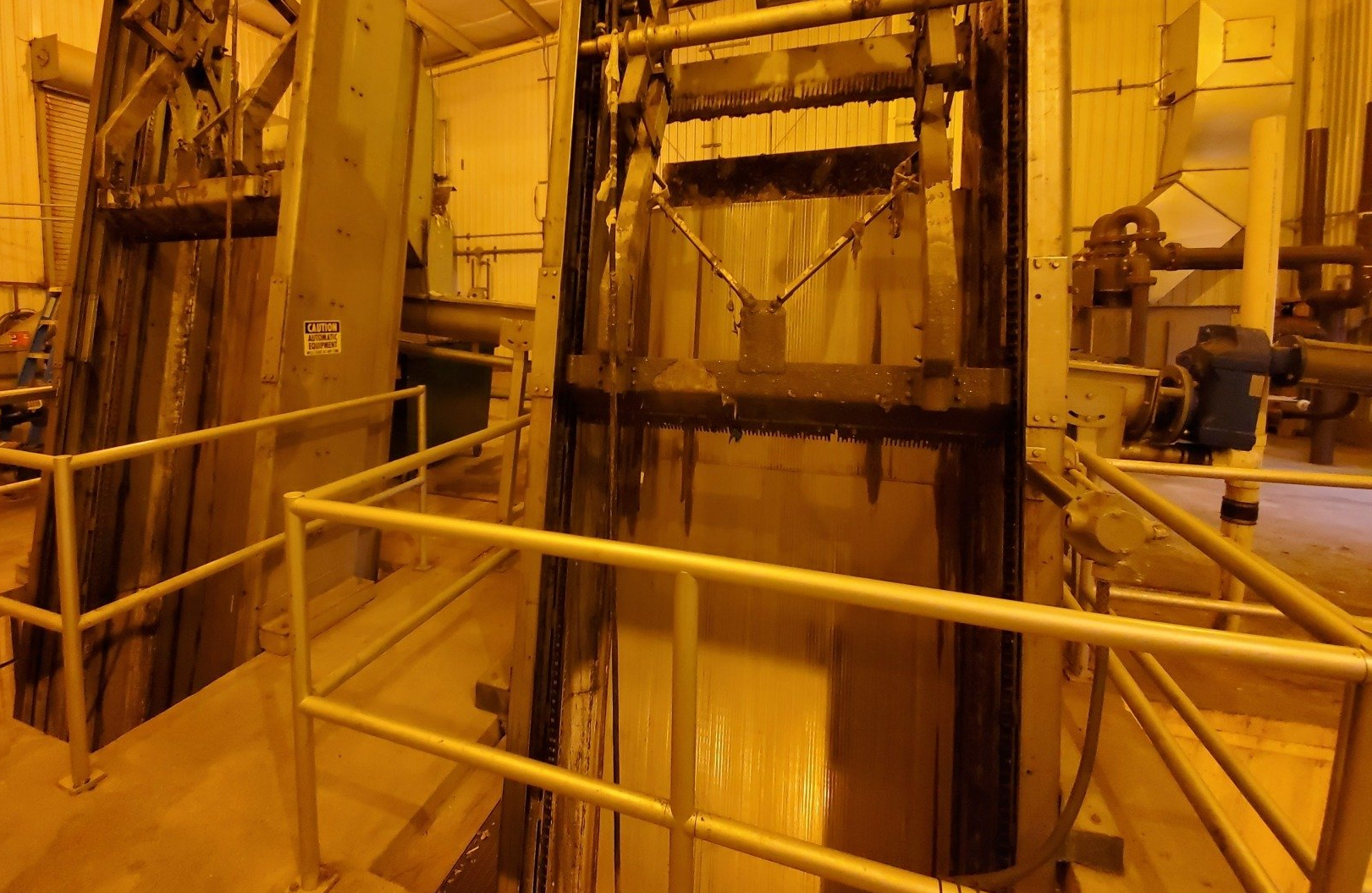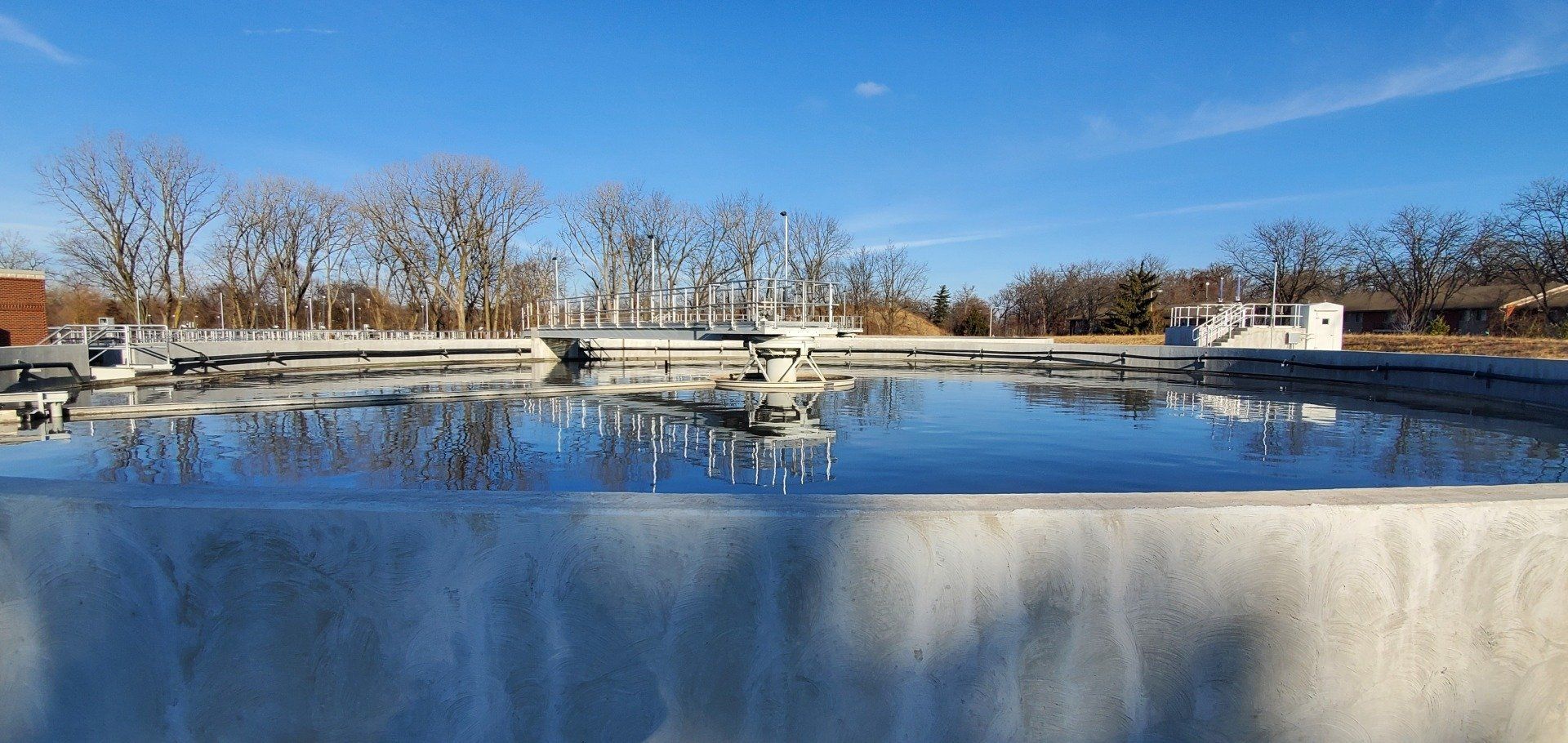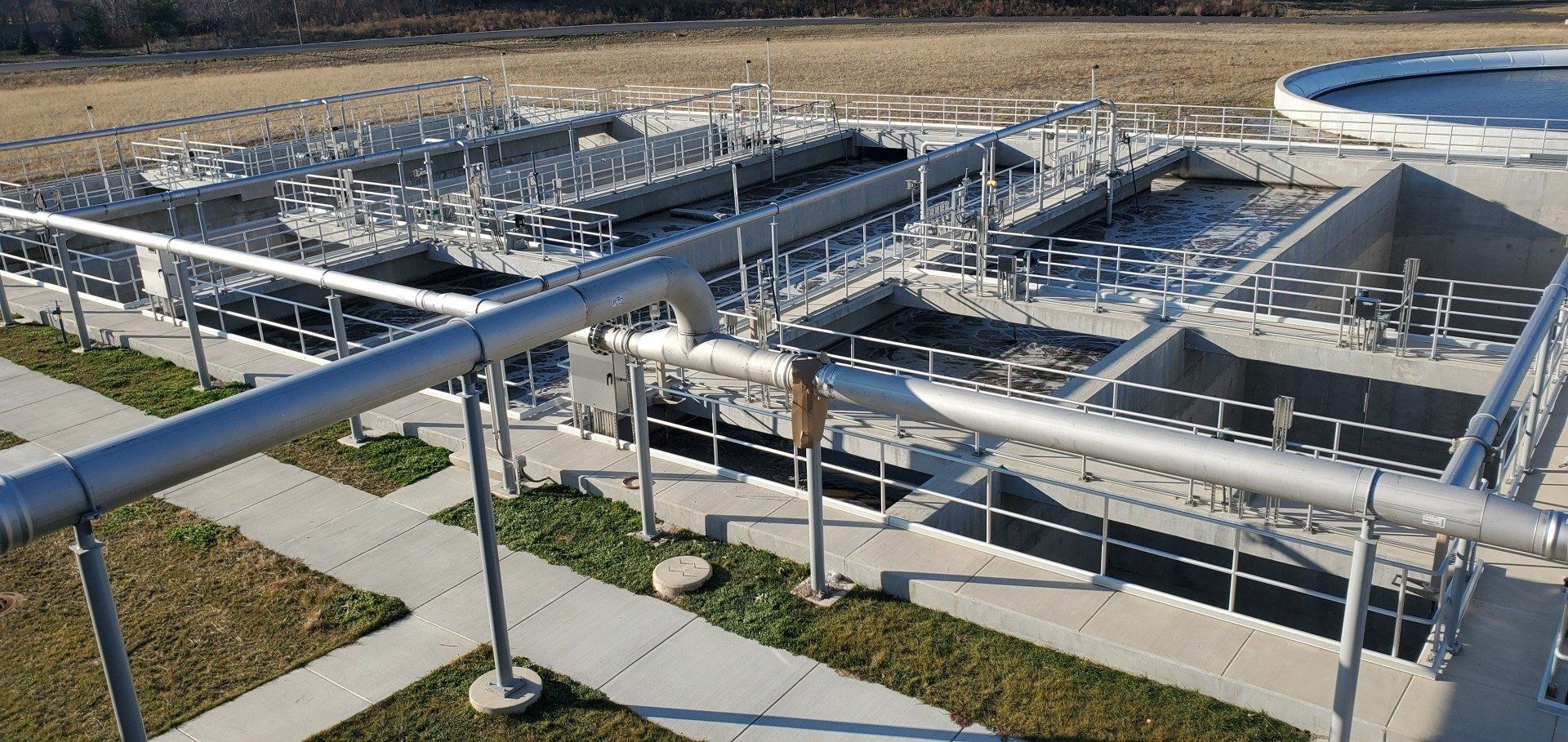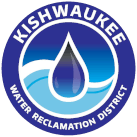Wastewater Treatment Process
Preliminary Treatment
The first phase of wastewater treatment is mechanical. It's focused on removing large objects and inorganic material from the wastewater.
On May 19, 1998, 1.8 inches of rain fell in about two hours. Flow of wastewater to the Kishwaukee Water Reclamation District plant went from 7 million gallons at 4:30 PM to 32.1 million gallons at 5:37 PM/ This increase of 25.1 million gallons in about an hour was not just by toilets flushing, but also rainwater entering the sanitary collection system through illegal connections.
Bar Screens
Wastewater is filtered through the openings between parallel bars with 1/2-inch spacing. A mechanical rake scrapes across the bars, removing items like diapers, plants, feminine hygiene products, and other debris that didn't belong in the sewer in the first place. This trash is compacted, bagged, and sent to the landfill.

Removing Grit
Next, wastewater enters a tank called a vortex grit chamber that causes heavier particles, like and, gravel, and/or coffee grounds, known as grit to settle out. The grit is collected in a trash bin bound for the landfill while the water continues on.
Primary Treatment
The next phase of treatment removes even more solids from the wastewater. About half of suspended solids are removed as sludge and scum during this phase.
Clarifiers
Wastewater is pumped into one of two primary clarifiers - large, round tanks where the water gets a chance to slow down and settle. Organic material that is denser than water settles to the bottom of the tank as sludge. The sludge is pumped to the digesters while the water flows by gravity to secondary treatment.

Secondary Treatment
With most of the solids removed, wastewater moves on to biological treatment. We maintain large colonies of microorganisms that naturally break down the organic matter in the wastewater.
Activated Sludge Treatment
Wastewater is pumped into aeration tanks, where helpful bacteria are suspended with fine air bubbles. A mixed population of many different kinds of microorganisms – just as you would find in nature – break down the organic material in the wastewater as their food supply. The rich supply of oxygen the air bubbles provide keeps the bacteria healthy and efficient.

Secondary Clarifiers
The wastewater is given a second chance to settle in clarifying tanks once the microorganisms have finished their work. When it moves on, it leaves these hardworking organisms behind to clean the next batch. By this stage, up to 95% of the original pollutants have been removed from the wastewater.
The sludge that settles to the bottom of the secondary clarifiers is returned to the head of the aeration tank to begin the process again.
Disinfection
This is the final phase of treatment, in which wastewater is disinfected before being discharged from the plant into the Kishwaukee River.
UV Disinfection
KWRD stopped using chlorine to disinfect wastewater in 2011. Instead, we use ultraviolet light, which is just as effective at treating harmful bacteria and organisms without any of chlorine's negative effects on the environment.
Before being discharged into the river, each batch of effluent undergoes lab tests to ensure it is clean, safe, and contains no harmful organisms or unhealthy pollutant levels.

